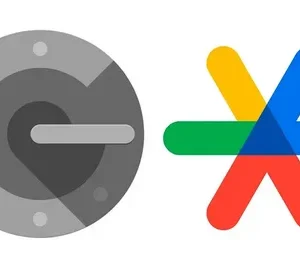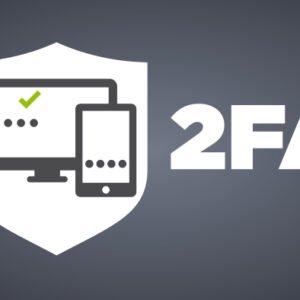In the fast-moving world of cryptocurrency, every satoshi counts. While most crypto investors spend time analyzing tokenomics, tracking market trends, and optimizing entry points, there’s one area that often flies under the radar: portfolio tracker apps. On the surface, these tools promise clarity, convenience, and control over your crypto assets. But beneath the user-friendly dashboards and colorful charts, some of these apps are silently draining your profits through hidden fees and opaque policies.
This blog post takes a deep dive into the mechanics of crypto portfolio tracker apps, exposes the not-so-obvious costs, and helps you make informed choices to protect your crypto gains.
What Are Crypto Portfolio Tracker Apps?
At their core, crypto portfolio trackers are tools that let users monitor their digital assets across various wallets and exchanges in real-time. These platforms sync with exchange APIs or allow manual input of holdings to provide performance analytics, tax reporting, and asset allocation insights.
Popular apps like CoinStats, Delta, Kubera, and Blockfolio (now part of FTX) have become favorites in the crypto community.
While the convenience is clear, the risks are not always spelled out. Let’s explore how some of these apps may be undermining your profits.
Hidden Charges in Portfolio Tracker Apps
The term “free” is thrown around liberally in the crypto app world. However, many free-to-download apps monetize in less-than-transparent ways. Here are some common hidden charges:
1. Premium Tiers and Subscriptions
Many apps offer a freemium model, where advanced features are locked behind a paywall. For instance:
- CoinStats Premium costs $4.99/month or more, offering features like unlimited exchange connections, DeFi tracking, and tax reports.
- Kubera charges $150/year for its portfolio tracking service.
These subscriptions might be worth it for some, but for passive investors, they could be unnecessary overheads.
2. Exchange Sync Fees
Some apps charge extra for syncing with specific exchanges or wallets. This is especially common with DeFi and hardware wallet integrations. While it’s usually framed as a “Pro” feature, it can quietly increase your monthly costs.
3. Data Selling and Privacy Trade-offs
Several portfolio apps sell aggregated user data to third parties for market research. Although anonymized, this can influence your trading behavior indirectly.
According to Decrypt, many crypto apps lack clear data protection policies and may share user behavior insights with advertisers or institutional investors.
4. In-App Swap and Trading Fees
Some apps, like CoinStats and Delta, allow in-app trading and token swapping. While convenient, these services often come with:
- High slippage
- Marked-up spreads
- Additional service charges
These can quietly eat into your profits, especially during volatile markets.
Comparing the Leading Portfolio Trackers
Here’s a breakdown of popular portfolio trackers and how they compare on hidden charges, sync options, and transparency:
| App | Free Tier Features | Premium Cost | Exchange Syncs | Hidden Charges / Concerns |
|---|---|---|---|---|
| CoinStats | Basic portfolio tracking, 2 wallets | $4.99/month | Yes | In-app swap fees, user data monetization |
| Delta | Portfolio & NFT tracking | $8.49/month | Yes | High fees on in-app trades |
| Kubera | All-in-one portfolio (crypto + stocks) | $150/year | Yes | Subscription-heavy model, bank sync risk |
| Blockfolio | Basic portfolio, news alerts | Free (acquired) | Limited | Limited features post-FTX acquisition |
| CoinTracker | Tax reports, simple dashboard | $59/year+ | Yes | Charges per transaction for tax filings |
As seen above, even the “best” apps come with trade-offs that many users don’t fully grasp until they receive a surprise charge or underwhelming support.
Why These Hidden Fees Matter for Crypto Investors
In traditional finance, a few dollars in monthly fees might not raise eyebrows. But in crypto, where volatility is high and profit margins can be razor-thin, every fee matters.
Imagine this:
- You invest $1,000 in altcoins and track them using a paid app.
- The app charges you $10/month.
- Over a year, that’s $120 in fees — 12% of your portfolio, regardless of performance.
Now add transaction fees from in-app trades, plus potential tax-reporting charges.
The result? Your tracker is profiting no matter how you perform. That’s an asymmetry worth reconsidering.
Red Flags to Watch Out For
Here are some warning signs that your portfolio tracker may be cutting into your gains:
- No transparent pricing page
- Free plan with aggressive upsell nudges
- Limited manual control (forcing you to sync accounts)
- Pushy in-app upgrade offers
- No clear data policy or privacy terms
Before syncing your wallet or paying for any features, dig into the fine print.
Safer Alternatives and Open-Source Options
If privacy, transparency, and cost are top priorities for you, consider open-source or non-custodial alternatives. These options offer more control and fewer hidden costs:
1. Rotki
Rotki is an open-source portfolio tracking app focused on data privacy. It runs locally on your machine and doesn’t send your data to any server. While the interface is less polished than CoinStats, the transparency is unbeatable.
2. Finoa (for advanced investors)
Finoa offers digital asset custody and management with institutional-grade compliance. While not for casual users, its transparency and security features make it ideal for high-net-worth investors.
3. Zapper and DeBank
For DeFi enthusiasts, Zapper and DeBank are excellent tools to track protocols and wallets without subscriptions. They make money from partner protocols, not from hidden user fees.
Best Practices to Protect Your Crypto Profits
Want to keep more of your hard-earned crypto? Here’s how:
- Audit Your App Usage: Review all the features you actually use. Cancel unused subscriptions.
- Avoid In-App Trades: Use trusted exchanges with transparent fee structures instead.
- Use Privacy-Focused Tools: Choose apps like Rotki that put your data first.
- Read the Terms: Look for sections on fees, data usage, and integrations.
- Set Cost Limits: Budget your tool stack like you would your investments.
Conclusion: The Hidden Cost of Convenience
Crypto portfolio tracker apps can be powerful allies in your investing journey. But convenience often comes at a cost — sometimes hidden in plain sight. While the colorful graphs and seamless syncs feel great, it’s crucial to pause and evaluate: Is this tool enhancing my performance or just skimming my returns?
As the crypto space matures, users must hold platforms accountable and make informed decisions. Your wallet deserves the same scrutiny you apply to your trades.
Stay vigilant, stay profitable.
Got thoughts or a story about hidden app fees? Share your experience in the comments below.






